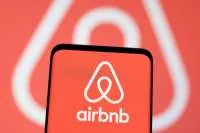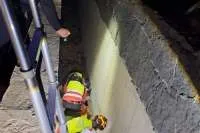Tools needed to build and develop blockchain-based applications
- 12-04-2023
- Business
- Canarian Weekly
Blockchain technology has completely changed how we interact with and use the web. Blockchain is being adopted by many businesses to improve traceability and integrity, lower transaction costs, and do away with the need for a middleman.
Anyone can view and authenticate their transactions on the internet. This fosters openness and trust among relevant stakeholders.
Leaping blockchain involves a lot of factors. Choosing the ideal blockchain platform for your company is one of the most fundamental and crucial considerations.
Regardless of whatever crypto platform you prefer, you must comprehend the trading software. There are several trading software or platforms, like the BitIQ official site where you may buy and sell cryptocurrencies like Bitcoin, Ethereum, and others.
There are quite a few blockchain development frameworks that exist, meaning that a single article can’t cover them. However, we'll concentrate on five of the most well-liked blockchain development frameworks instead:
1 MetaMask.
MetaMask enables users to access the Web 3 ecosystem of decentralized applications via a cryptocurrency wallet (dApps). Interacting with dApps and smart contracts on the Ethereum network through a mobile app or internet browser (extension) is easy.
MetaMask offers a user-friendly interface and makes handling transactions and tokens simple. It is nothing less than a blessing for blockchain developers. MetaMask is unquestionably worthwhile if you need a solid way to embark on a blockchain platform development journey.
2 Solidity.
Solidity is a rising, contact-based programming language. You can write it and use it on Ethereum. Writing contracts that are consistent with Ethereum's nodes, wallets, and clients are now possible because its design aims to target abstract machine similar to Ethereum.
Solidity makes it easy for Blockchain programmers to build apps that can execute auto business logic found in smart contracts, leaving an authoritative and trustworthy record of every transaction. The blockchain platform is excellent for creating contracts for voting, blind auctions, and crowdfunding.
As variables in Solidity are statically typed, their types cannot be changed once they are declared. Additionally, it provides functions like auto memory management and a quick compilation time that facilitate development.
3 Hyperledger Sawtooth.
Hyperledger Sawtooth uses modular blockchain technology. You can use it to build distributed applications and ledger networks. Companies utilize Hyperledger Sawtooth to develop extremely secure blockchain solutions and create reliable and scalable systems. The ledger type here in Hyperledger Sawtooth is comparable to that of Ethereum.
Some of the advanced characteristics of the Hyperledger Sawtooth include:
- With the help of an integration project named Seth (Sawtooth-Ethereum), Ethereum smart contracts can be used with Hyperledger Sawtooth.
- In contrast to other blockchain platforms, parallel processing allows rapid transaction processing.
- It contains a consensus protocol, which is dynamic and undefinable that allows you to adapt the consensus process whenever you need.
4 Truffle.
For Ethereum, Truffle serves as a testing framework and an asset route. It facilitates the creation and deployment of contracts for programmers and supports Ethereum development chores like testing contracts, asset management, and Solidity code creation.
You get a development environment to build Ethereum-based apps via this Ethereum blockchain framework. The extensive library collection offers specialized deployments for providing innovative smart contracts.
The linkage, construction, and distribution of smart contracts are also made possible by Truffle, which also offers a configurable build workflow (pipeline) for creating unique build processes.
5 Corda.
In 2015, the R3 Consortium created Corda, an open-source platform for blockchain development. Corda was first developed for use by financial institutions. However, it expanded subsequently to provide services for other industries as well, including digital assets, medical care, and finance. According to its marketing, the next-generation blockchain architecture is "the DLT platform of choice for financial services and beyond."
Since the platform lacks a mining capability, most nodes never see a portion of the transactions. Alternatively, not every node can participate in Corda transactions. Also, Corda offers a wide variety of consensus techniques.
Conclusion:
Blockchain tools make it easier to create a blockchain solution and enhance your understanding of the topic. Anyone can now more easily enter the blockchain game thanks to these blockchain platforms and technologies.
The blockchain platforms we examined here are well-known and offer top profits and they are expected to increase their market share in the following years. However, waiting for more favourable economic conditions is not necessary to make sensible investment decisions. These platforms allow for making a favourable portfolio in the future.
Other articles that may interest you...
Trending
Most Read Articles
Featured Videos
A Vision of Elvis Tenerife Promo
- 10-05-2025
TEAs 2025 Highlights
- 17-11-2025

























































